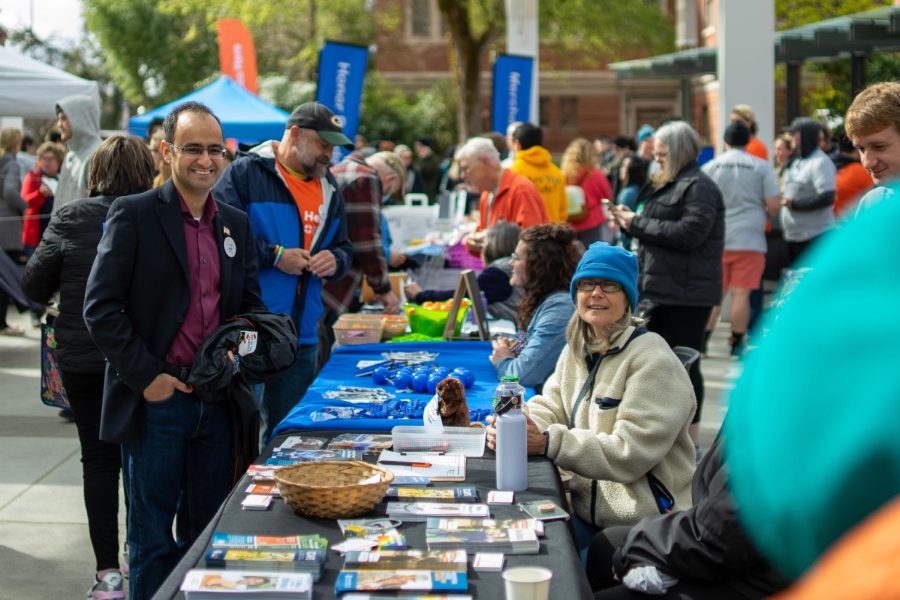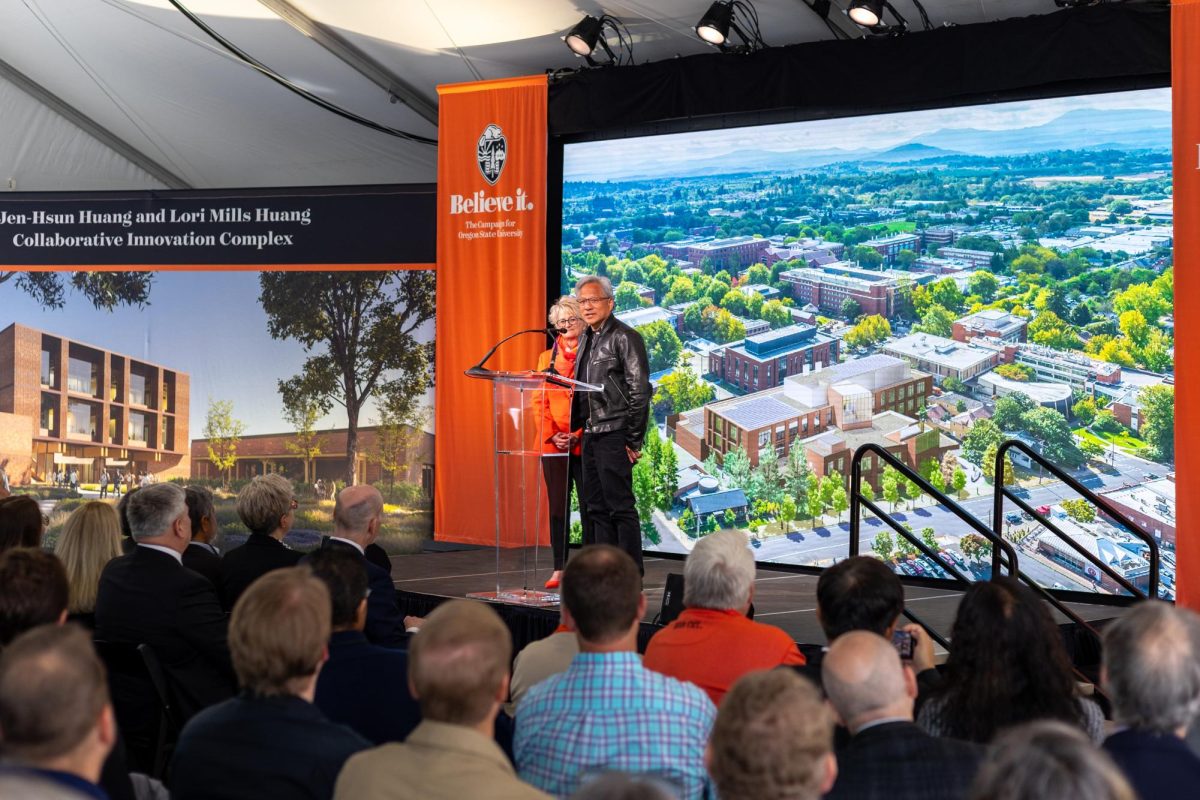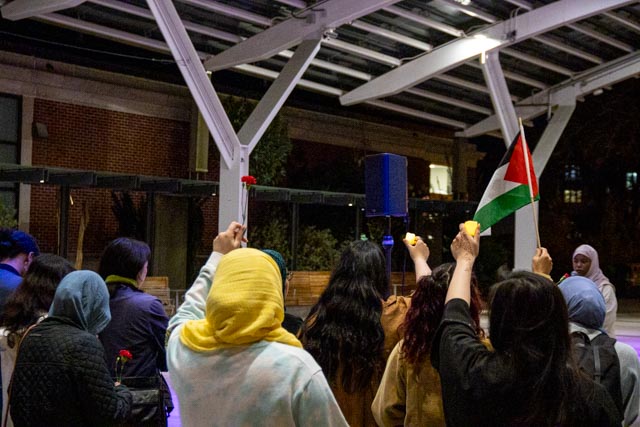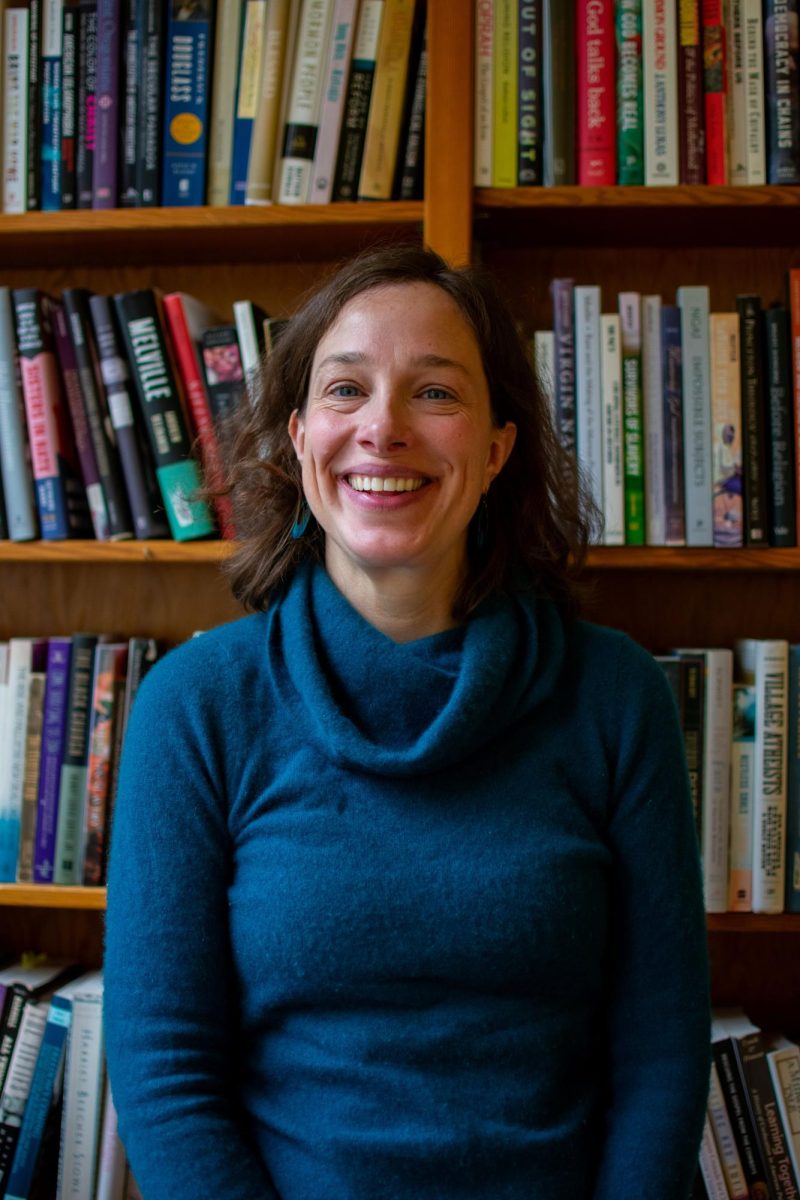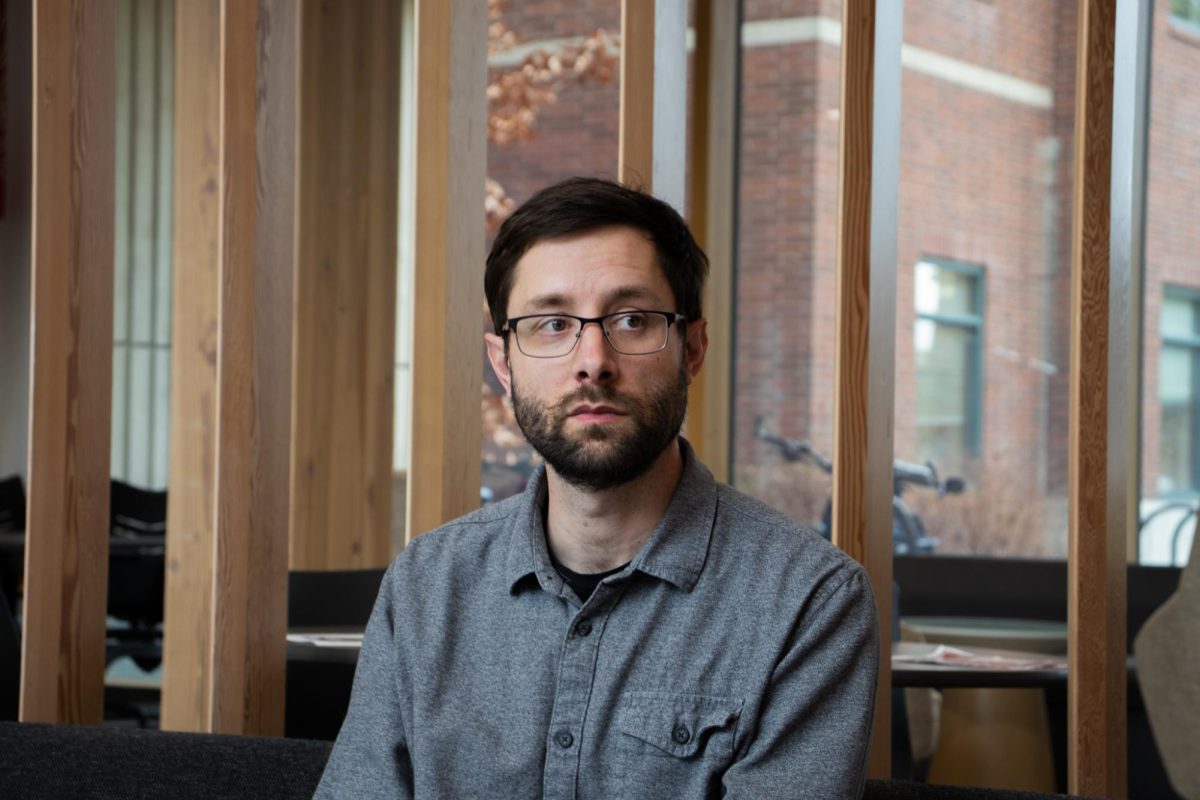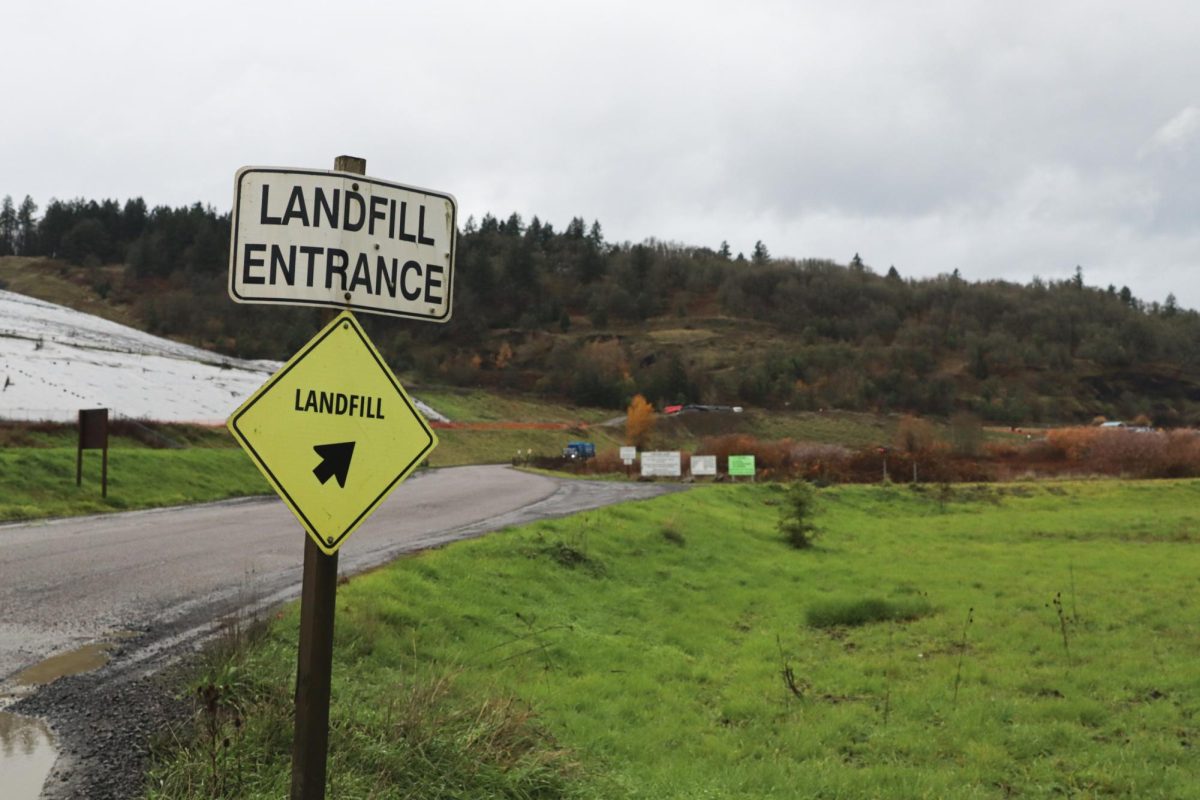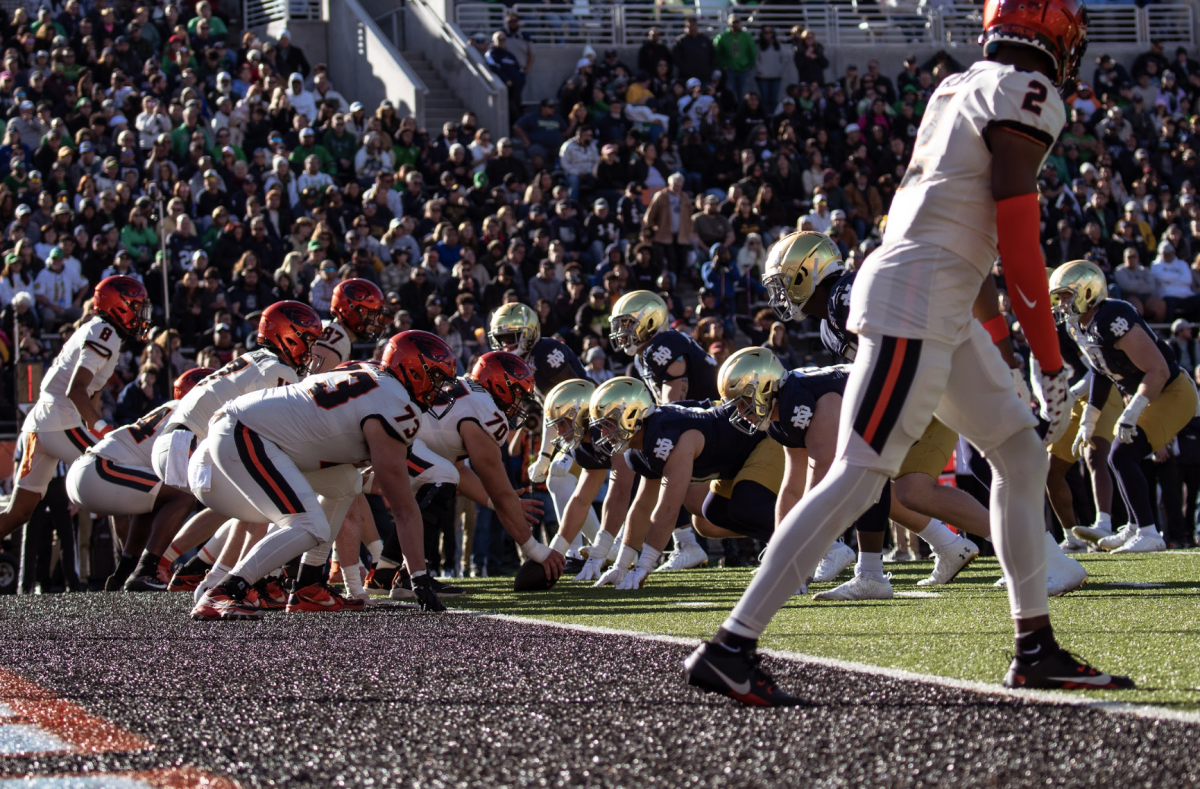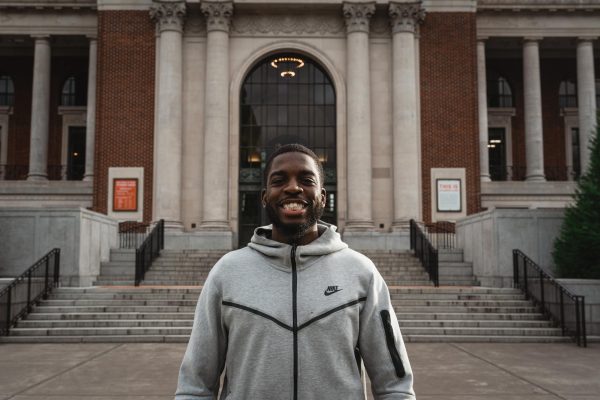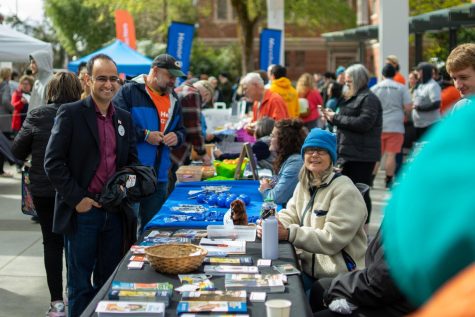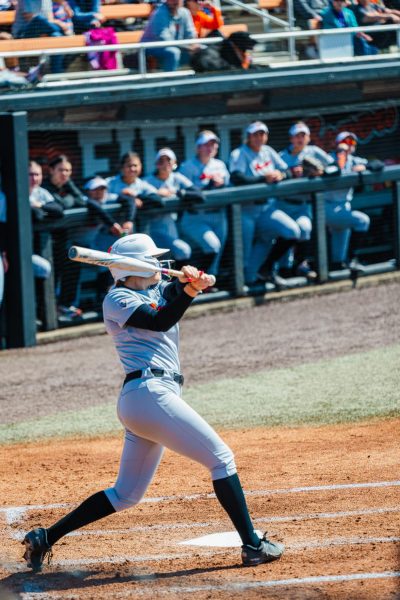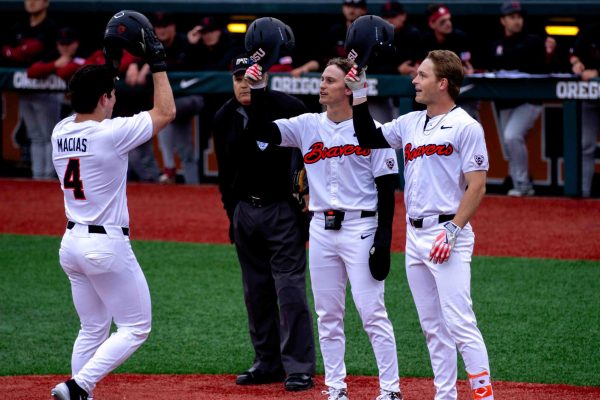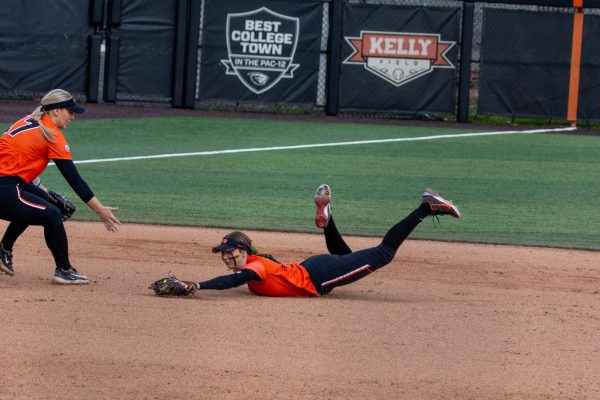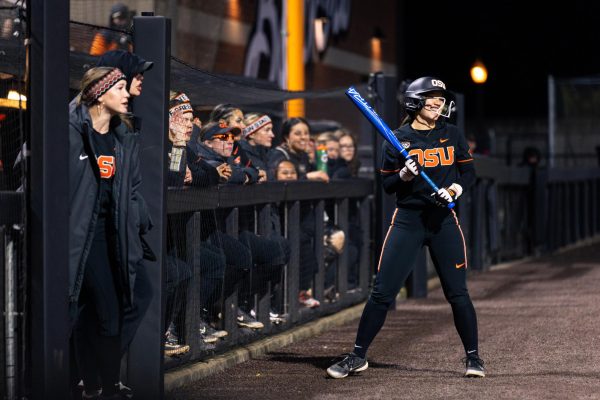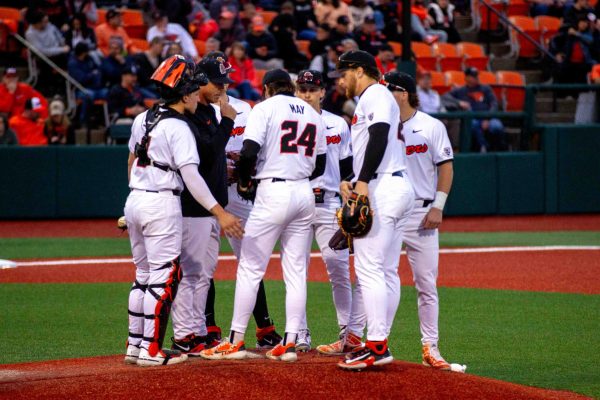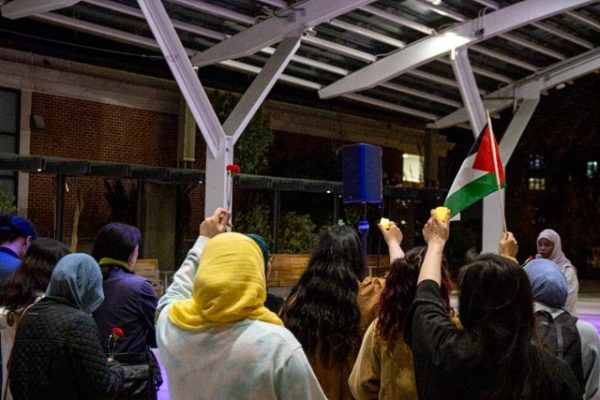Copyright, compensation and credit
growing sophistication surrounding AI and art raises questions on ethics
A photo illustration of an Ai generated image (left), and a hand drawn image, on April 24, in Corvallis. AI generated imagery can use text input to generate just about anything you could think of.
May 9, 2023
Among other things, the growing sophistication of artificial intelligence has also begun to raise questions and concerns in modern discourse surrounding art, including people’s livelihood, creative expression and intellectual property.
In 1956, Allen Newell, Herbert Simon and Cliff Shaw invented The Logic Theorist, a program that proved theorems from Principia Mathematica, a three-volume work on the foundations of mathematics. According to Harvard University, it is widely considered to be the first AI program.
AI has now become widely used, and can be found in cars such as Tesla, virtual assistants such as Amazon’s Alexa and in programs that create images based on written prompts.
“I don’t see it replacing artists in museums,” said Evan Baden, a photography instructor at Oregon State University. “(In) a commercial capacity … why wouldn’t a company like Nike just (use AI) instead of having to hire a photographer?”
A Goldman Sachs report from April discussed that a new wave of AI systems may have a major impact on employment markets, threatening 300 million full-time jobs with automation. This includes many people who are concerned about their ability to make a living through art.
The BBC reported on Jason M. Allen, a contestant in the Colorado State Art Fair who used AI to win an art competition. Allen won $300 in the “emerging digital artist” category.
“It’s over. A.I. won. Humans lost,” Allen was quoted saying.
The Guardian reported a German artist, Boris Eldagsen, rejected the prize he won in the creative open category at the Sony world photography awards because the photo he submitted was AI.
In refusing the award, Eldagsen, who studied photography and fine arts at the Art Academy of Mainz, wanted to open up a discussion in the art world about what should be considered true photography.
In addition to the concern about jobs, people like Baden also believe another big concern is the issue about copyright.
In the report from The BBC, OpenAI said their DALL-E AI system has been used by more than 3,000 artists spanning 118 countries, utilizing their software for money. This raises a question on whether the copyright belongs to the writer of the prompt or the writers of the AI program.
“AI companies are pretty adamant that they own the final results of the things you use their software for,” Baden said.
The New Yorker reported Kelly McKernan, an artist and illustrator specializing in imaginative realism and pop culture watercolor paintings, noticed their name was being used in prompts for AI-generated images.
She later joined a class-action lawsuit with two other artists against AI image generators Midjourney, Stable Diffusion and DeamUp. Their attorney, Matthew Butterick, said they all make use of LAION-5B, a nonprofit, publicly available database that indexes more than five billion images from across the web, including ones from artists.
According to Butterick, this violates “the three C’s”: copyright, compensation, and credit.
Julia Bradshaw, associate professor of Photography and New Media Communications at OSU, said she’s very interested in image AI: how it’s made, what the issues are and how it can be efficiently used. She initially noticed the lacking quality in the generated images, however, she believes it will only get better with newer versions.
“I was introduced to (image AI) through a friend … who has an illness, and it’s his form of creativity,” said Bradshaw. “My plan is to integrate it into my class (Concepts of Digital Imagery).”
Bradshaw doesn’t know whether she would call AI a net positive or negative currently, however, she said that she’d be a fool if she didn’t learn to work with it.
Alette Hernandez, a Corvallis resident from Minnesota, has been creating art for over 10 years, working in different mediums, including painting, drawing with oil pastels, sculpting and photography.
Hernandez has used AI applications such as Lensa, which allows a user to see different portraits of themself. However, there’s a dangerous side to AI-generated images that Hernandez believes isn’t talked about enough.
“Individuals are nonconsensually creating AI generated porn of real people for selfish, disgusting reasons,” Hernandez said. “It is harmful to mental health and creates a dangerous space that women have to prepare themselves for if they want to have a media presence.
Earlier this year, Kotaku–a gaming news publication–reported on Twitch streamer, Brandon Ewing, online known as ‘Atrioc,’ accidentally revealing a website notorious for producing deepfaked–AI generated–pornographic images of female Twitch streamers. Some streamers whose likeness was used as a deepfake on the website happened to be his friends.
Overall, Hernandez believes AI could be used to assist artists, such as using it for ideas. However, she chooses to only work with physical materials because she values human experience and the community aspect of art making.


